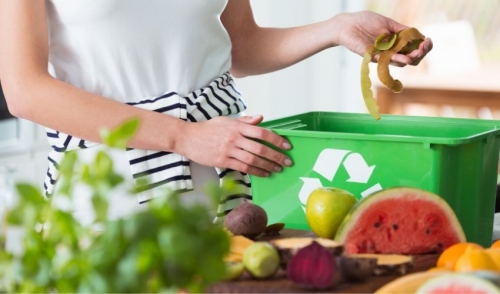
How to Effectively Compost
Composting can be a great way to recycle organic material, create rich amendments for your landscape and garden, reduce your overall waste, and save money. It takes more than just tossing scraps in a pile and letting them decompose to make the most of your compost, however, but with these thoughtful tricks, you can compost far more effectively and efficiently.
Won’t It All Just Decompose Anyway?
While any organic material will gradually decompose if left to its own devices – this is exactly what happens to fallen leaves and other debris in the forest or jungle, as well as organic waste in landfills – there are ways to help the process along. By effectively composting, you can increase the decomposition rate significantly so you have more rich, nutritious compost to use in a shorter time period. The overall composition of the compost can also be adjusted to better meet the specific nutrient needs of your garden, flowerbeds, and landscape. Furthermore, properly managed compost is much less likely to attract pests or generate strong odors. With so many benefits, there’s no reason not to tweak your compost habits for more effective results.
Tips for Effective Composting
Everyone can compost a bit differently to suit the needs of their garden, landscape, and lifestyle. These tried-and-true tricks, however, can improve the quality and condition of your compost whether you have just a small tumbler or a large pile decomposing away.
- Position Your Pile Properly Depending on your climate, either full or partial sun is often best to help compost stay heated and to encourage better microbial action. A level area is preferred, and there should be good drainage so the compost does not become waterlogged, which could drown the microbes and bacteria that foster better decomposition. The area should be easy to access so you can work with your compost as needed, but it should also be out of sight if desired.
- Keep It Covered If your area has excessive rainfall or snow accumulation, a cover can keep your compost from becoming drenched or buried. A simple roof can be effective, or you may use a tarp to keep the compost sheltered. In very hot areas, basic shade can keep the compost from overheating, or in dry or drought-stricken regions, a tarp can help retain moisture to keep the pile at the proper moisture and humidity for the best decomposition.
- Water Your Pile If your compost dries out, the beneficial bacteria, microbes, worms, and other creatures helping the decomposition will die. Ideally, the pile should have a moisture level similar to a damp sponge, but without dripping or standing water. In dry areas or during periods of drought, it may be necessary to water your pile occasionally, or in very humid or wet regions, you may need to cover the pile to keep it from being too wet.
- Create a Diverse Mix Compost requires both green (nitrogen-rich) and brown (carbon-rich) materials to create a good nutritional balance. A 50/50 mix is easiest to maintain, though a more carbon-rich mixture is often preferred. Adding diverse materials to the pile can ensure the presence of more nutrients and minerals for healthier compost. Unusual items that can help enrich your compost include coffee grounds, used tea bags, pet fur, human hair, soiled paper napkins or tissues, spent matches, wooden toothpicks, cut flowers, fireplace ashes, eggshells, and corn cobs.
- Avoid Unwanted Materials Certain materials should not be added to compost piles because either they are more likely to attract pests or create strong, foul odors. Keep dairy, meat, pet feces, kitty litter, bones, fish, and dirty diapers out of your compost pile. Furthermore, avoid putting chemically treated items – pet fur that has been treated for fleas, weeds sprayed with pesticides, etc. – in a compost pile, as these toxins can inadvertently kill the microbes necessary for decomposition.
- Mix It Up Oxygen is essential for the best decomposition. Mixing your pile regularly using a pitchfork or shovel can help turn the material and incorporate more air. If the pile is short or shallow, raking the material can help turn it over to keep it oxygenated, but be sure you are able to reach to the middle and bottom of the pile for the best results.
- Chop Up Items Because the ultimate goal of compost is to achieve a fine, crumbly texture without discernible pieces, chopping, crushing, cracking, or shredding material before you add it to the pile will help it decompose more effectively. Smaller pieces have greater surface area for microbes to reach, which will speed up the decomposition. Smaller, finer textures will also be easier to turn and mix so you don’t have to strain to work your compost.
Different techniques will work best for different types of composting methods, and you should experiment with tricks to best suit your composting style. Before you know it, you’ll be composting so effectively that you’ll always have a healthy, nutritious supply of compost to nourish your garden, flowerbeds, containers, and anywhere your landscape needs a boost.
